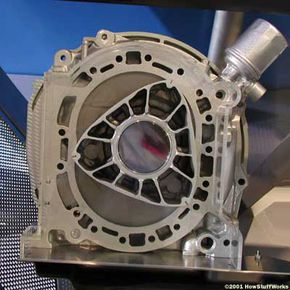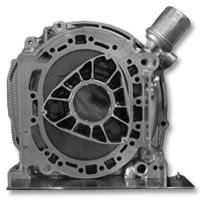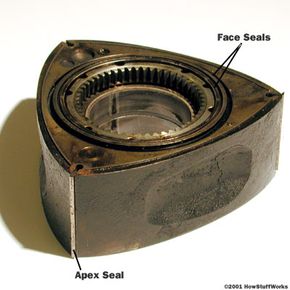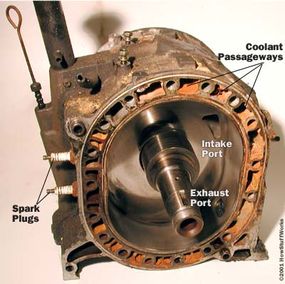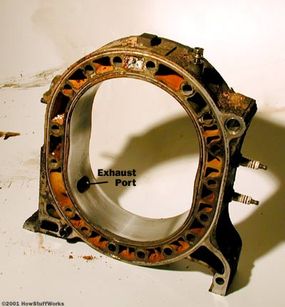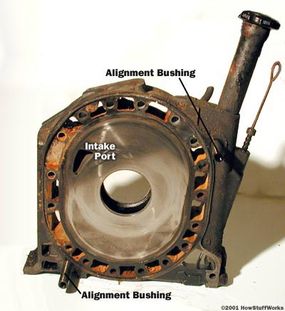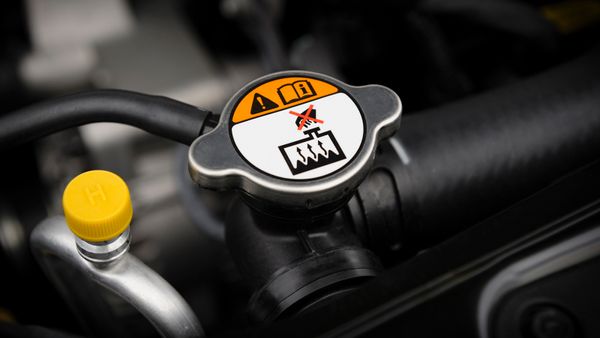Rotary engines use the four-stroke combustion cycle, which is the same cycle that four-stroke piston engines use. But in a rotary engine, this is accomplished in a completely different way.
If you watch carefully, you'll see the offset lobe on the output shaft spinning three times for every complete revolution of the rotor.
The heart of a rotary engine is the rotor. This is roughly the equivalent of the pistons in a piston engine. The rotor is mounted on a large circular lobe on the output shaft. This lobe is offset from the centerline of the shaft and acts like the crank handle on a winch, giving the rotor the leverage it needs to turn the output shaft. As the rotor orbits inside the housing, it pushes the lobe around in tight circles, turning three times for every one revolution of the rotor.
As the rotor moves through the housing, the three chambers created by the rotor change size. This size change produces a pumping action. Let's go through each of the four strokes of the engine looking at one face of the rotor.
Intake
The intake phase of the cycle starts when the tip of the rotor passes the intake port. At the moment when the intake port is exposed to the chamber, the volume of that chamber is close to its minimum. As the rotor moves past the intake port, the volume of the chamber expands, drawing air/fuel mixture into the chamber.
When the peak of the rotor passes the intake port, that chamber is sealed off and compression begins.
Compression
As the rotor continues its motion around the housing, the volume of the chamber gets smaller and the air/fuel mixture gets compressed. By the time the face of the rotor has made it around to the spark plugs, the volume of the chamber is again close to its minimum. This is when combustion starts.
Combustion
Most rotary engines have two spark plugs. The combustion chamber is long, so the flame would spread too slowly if there were only one plug. When the spark plugs ignite the air/fuel mixture, pressure quickly builds, forcing the rotor to move.
The pressure of combustion forces the rotor to move in the direction that makes the chamber grow in volume. The combustion gases continue to expand, moving the rotor and creating power, until the peak of the rotor passes the exhaust port.
Exhaust
Once the peak of the rotor passes the exhaust port, the high-pressure combustion gases are free to flow out the exhaust. As the rotor continues to move, the chamber starts to contract, forcing the remaining exhaust out of the port. By the time the volume of the chamber is nearing its minimum, the peak of the rotor passes the intake port and the whole cycle starts again.
The neat thing about the rotary engine is that each of the three faces of the rotor is always working on one part of the cycle -- in one complete revolution of the rotor, there will be three combustion strokes. But remember, the output shaft spins three times for every complete revolution of the rotor, which means that there is one combustion stroke for each revolution of the output shaft.
